
Television comedy has transformed immensely over the year, but one thing remains constant: the sitcom.
From classics like I Love Lucy to modern gems like Brooklyn Nine-Nine, sitcoms will always be a staple in pop culture, entertaining us with their blend of humor and, let’s face it, relatable chaos.
But what makes a sitcom tick? How do writers craft these comedic goldmines? What should you do if you want to write one yourself? All the questions, and guess what, we have the answers!
In today’s blog, we’ll explore the world of situational comedy, see exactly why they’re so beloved and, most importantly, how you can create one for yourself (with or without a laughter track!). Let’s get going…
In This Article:
- What is a Sitcom?
- Sitcom Structure: Half-Hour Pacing
- Multi-Cam vs Single-Cam Sitcoms
- Character-Driven Humor: Ensemble Casts and Archetypes
- Iconic Sitcom Examples
- Writing Your Own Sitcom: Where to Start
- Writing a Sitcom with Celtx
- Conclusion
What is a Sitcom?
So, what exactly is a sitcom? Well, the term “sitcom” is a shortened version of “situational comedy.” It refers to a genre of TV comedy writing that revolves around a fixed set of characters who navigate humorous and often exaggerated situations.
Whether as a traditional American sitcom like Family Matters, an animated sitcom like Family Guy, or a dramedy sitcom like Modern Family, these shows are typically set in common environments like a home, workplace, or a favorite hangout spot.
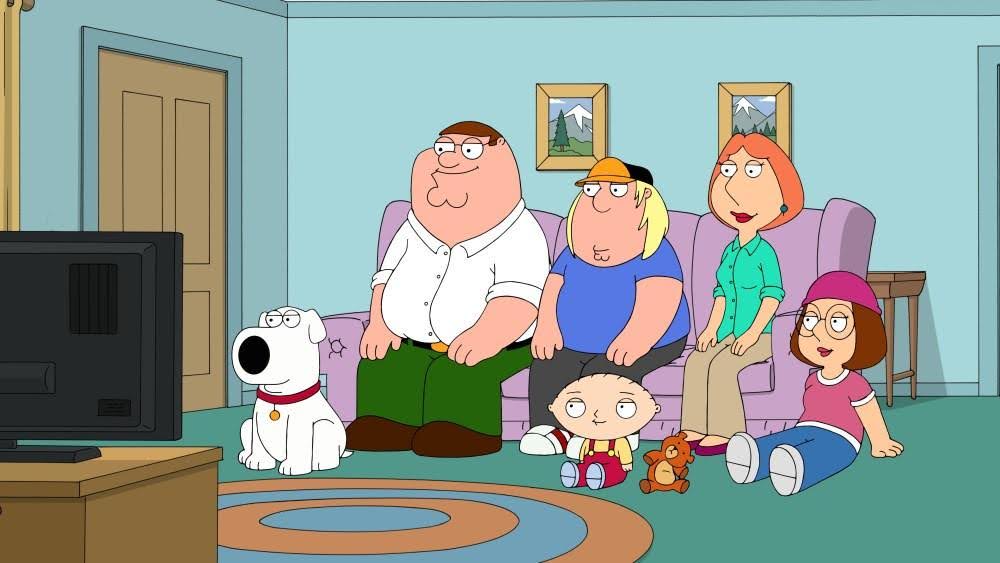
What sets most sitcoms apart is their episodic nature. Each episode presents a self-contained story, yet the characters and their relationships grow and evolve over time. It’s this unique blend of humor, relatable scenarios, and engaging main characters that give sitcoms their appeal.
Over the years, the format of sitcoms has evolved, adapting to changes in society and viewer tastes. While early sitcoms were often filmed in front of a live studio audience with a multiple-camera setup, modern sitcoms might use a single-camera format, eschew laugh tracks altogether, or explore more dramatic themes.
Yet, despite these changes, the essence of the situation comedy (humor derived from relatable situations and characters) has remained largely the same. This enduring formula explains why sitcoms continue to entertain us, decade after decade.
Planning your own sitcom? Celtx makes it easy to outline characters, episode arcs, and series structure—all in one place.
Click here to try it today!
Sitcom Structure: Half-Hour Pacing
The secret sauce of the sitcom is structure, with a standard runtime of around 22-25 minutes (with commercials making it a full half-an-hour). This demands tight pacing.
So, here’s how sitcoms are structured:
You’ll find they’ll follow a typical three-act format. To demonstrate this, we’ll use the hit series Parks and Recreation.
Act One | The Set Up
Here, the day’s conflict or problem is introduced. In Parks and Recreation, a workplace challenge is usually presented.
Act Two | Escalation
The characters attempt to solve the problem, usually making things worse in the process. This is the case in Parks and Recreation, where the eccentricities of the ensemble cast make things tricky to deal with things.
We find they usually turn a minor inconvenience into a full-blown crisis.
Act Three | Resolution
The conflict is resolved, often with a twist or heartfelt moment. In Parks and Recreation, this resolution is usually tied up with a sweet or hilarious blow.

So why the three-act structure? Well, it provides both clarity and momentum, allowing the story to flow smoothly. Every minute counts with each joke having to land alongside the flowing story.
If you want to break things down even further, then why not try the five-act structure? Find out more about it here.
Multi-Cam vs Single-Cam Sitcoms
One key technical distinction in sitcoms is the camera setup. The choice between a multi-cam and single-cam setups not only affects the visual style of the final product, but also the tone and pacing of the show.
Let’s explore the difference between the multi-cam and single-cam sitcoms.
Multi-Camera Sitcoms
These are usually shot on a sound stage in front of three to four cameras. A live studio audience is often also in place, making the sitcom feel almost like a stage play.
Multi-cam sitcoms will rely on dialogue, timing and obvious punchlines, often with the audience’s reactions or a laugh track.
Examples include:
- Friends
- The Big Bang Theory
- Two and a Half Men
All three of these shows embrace a theatrical energy. The laughs are always louder, and the stories will often revolve around quick wit and heightened antics.

Single-Camera Sitcoms
Single-camera sitcoms will normally be filmed like a movie, with one camera. There is no audience or laugh track, allowing for more cinematic storytelling, subtle humor and complex visuals.
Examples include:
- The Office
- Modern Family
- Arrested Development
Single-camera shows can experiment more with tone and storytelling techniques. They can go on location away from a studio set to add further dimension.
From mockumentary interviews to surreal cutaways, this format offers flexibility and emotional depth.

Character-Driven Humor: Ensemble Casts and Archetypes
The engine of every great sitcom is driven by its characters. While the plot brings structure, the characters provide the soul and the laughs.
We’ve already looked at the impact of the cast of Parks and Recreation and you’ll find that most sitcoms will revolve around an eclectic ensemble set of characters just like this. A group of distinct personalities who bounce off each other in entertaining ways.
While no two shows are the same, you’ll tend to find similar archetypes within the ensemble cast. Here are some of them:
The Straight Man/Woman
Essentially, this is the ‘normal’ person in a world full of weirdos. For example, Jim in The Office who brings a grounded sense of reality to the chaos that ensues in the Scranton branch of Dunder Mifflin.
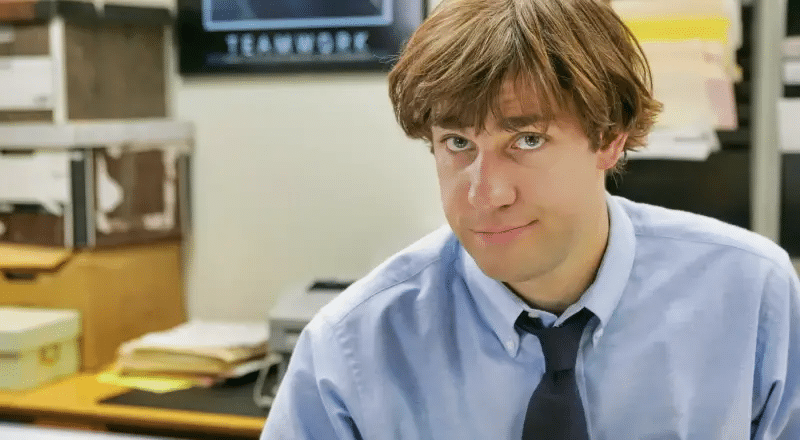
The Lovable Doofus
This character is always well-meaning but always finds themselves clueless to what’s going on around them. Just like Joey in Friends.

The Cynic
Dry, sarcastic, and often the voice of reason among the more excitable and disordered of the cast. Daria in Daria provides this voice of reason to her fellow characters.

The Overachiever
Ambitious to a fault, the overachiever is always keen to please and will sometimes step on others’ toes to get what they want, usually with hilarious consequences. Leslie Knope from Parks and Recreation is one such overachiever.
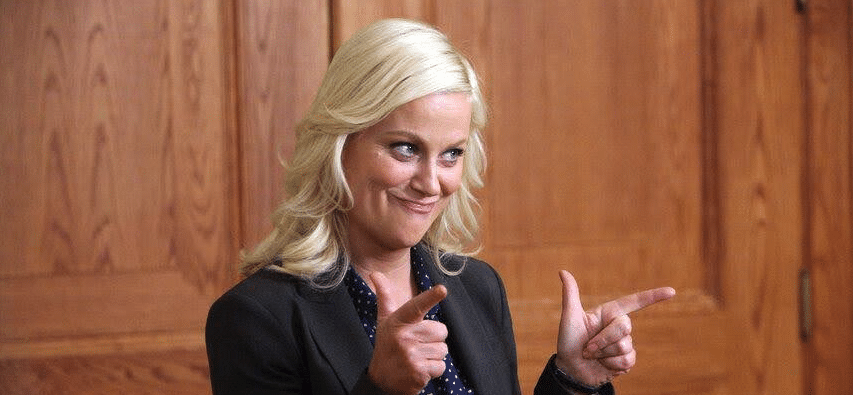
The Wild Card
This person is usually unpredictable and outrageous, throwing unexpected curveballs both at the plot and the other characters. Kramer in Seinfeld does just that.

It’s the interplay of all these personalities that creates endless opportunities for comedy. What matters isn’t necessarily the originality of the character types but the chemistry between them and how we as writers explore their dynamics.
Iconic Sitcom Examples
When we think about what a sitcom is, it can be helpful to look at some great examples, both classic and contemporary!
Classic Sitcoms
I Love Lucy (1951-1957)
Lucille Ball’s timeless comedy epitomizes the sitcom’s ability to derive humor from everyday situations and characters, with Lucy Ricardo’s zany schemes becoming a staple of the genre. The first sitcom to film in front of a live studio audience.
All in the Family (1971-1979)
This sitcom’s innovation lies in its bold use of humor to confront societal issues, highlighting how a sitcom can be both funny and thought-provoking.
Cheers (1982-1993)
Displaying the strength of character-driven humor, with its diverse bar regulars generating endless comedic situations, Cheers demonstrates the importance of a consistent cast.
Seinfeld (1989-1998)
Known as “a show about nothing”, Seinfeld mastered the art of deriving humor from mundane situations.
Friends (1994-2004)
With its relatable characters and quotable dialogue, Friends epitomized the power of sitcoms to resonate with audiences, while its Central Perk and apartment settings underscored the importance of familiar environments.
Contemporary Sitcoms
30 Rock (2006-2013)
Created by and starring Tina Fey, 30 Rock satirizes behind-the-scenes of a sketch comedy show, featuring quirky characters and absurd humor drawn from unique situations.
Parks and Recreation (2009-2015)
Showcasing a distinct and lovable ensemble cast, this sitcom thrives on character-driven humor in the setting of local government.
Brooklyn Nine-Nine (2013-2021)
Set in a police department, this show perfectly blends witty dialogue, situational humor, and character-driven comedy.
The Good Place (2016-2020)
This philosophical sitcom explores morality and ethics with humor and heart, demonstrating that sitcoms can tackle big ideas while keeping audiences laughing.
Schitt’s Creek (2015-2020)
A riches-to-rags family story, this sitcom leverages a unique setting, and a strong ensemble cast to deliver character-based humor.
Whether you’re writing a multi-cam or single-cam sitcom, Celtx script writing software handles the formatting for you—so you can focus on what’s funny.
Try it for free today!
Writing Your Own Sitcom: Where to Start
Feeling inspired? Well, great news: many successful sitcoms started with someone observing life’s absurdities and thinking “this would make a great show!”.
So, how do you begin?
1. Find Your Premise
Every sitcom needs a strong premise. This is a unique situation that creates room for comedy. Here are three questions you should ask yourself when working out your premise:
- What’s the world of this show?
- Who are the characters?
- What tone are you going for? (Absurd, grounded, sweet, cynical?)
If you’re struggling, perhaps some strong examples from famous sitcoms will help:
- A small group of friends navigate the single life in New York (Friends).
- A small-town parks department filled with oddballs (Parks and Recreation).
- A group of IT workers in a dysfunctional corporate basement (The IT Crowd).

2. Create Memorable Characters
While your characters should be exaggerated, they should be equally grounded in truth. Consider their goals, flaws, quirks and relationships to one another just like you would for any other genre.
Conflict arises naturally when well-defined characters collide.
TOP TIP: Use the archetypes we discussed earlier in the blog but make them your own. Give each of your characters a backstory and a personal angle that feels real.
3. Build Your World
No matter how absurd and chaotic, sitcoms thrive on familiarity with the setting becoming a character itself. Whether it’s a bar, office or kitchen, you’ll return to it every episode. The bar in It’s Always Sunny in Philadelphia is one great example of a location we visit every episode without fail.
Establish the rules and tone of your world early on through thorough world building.
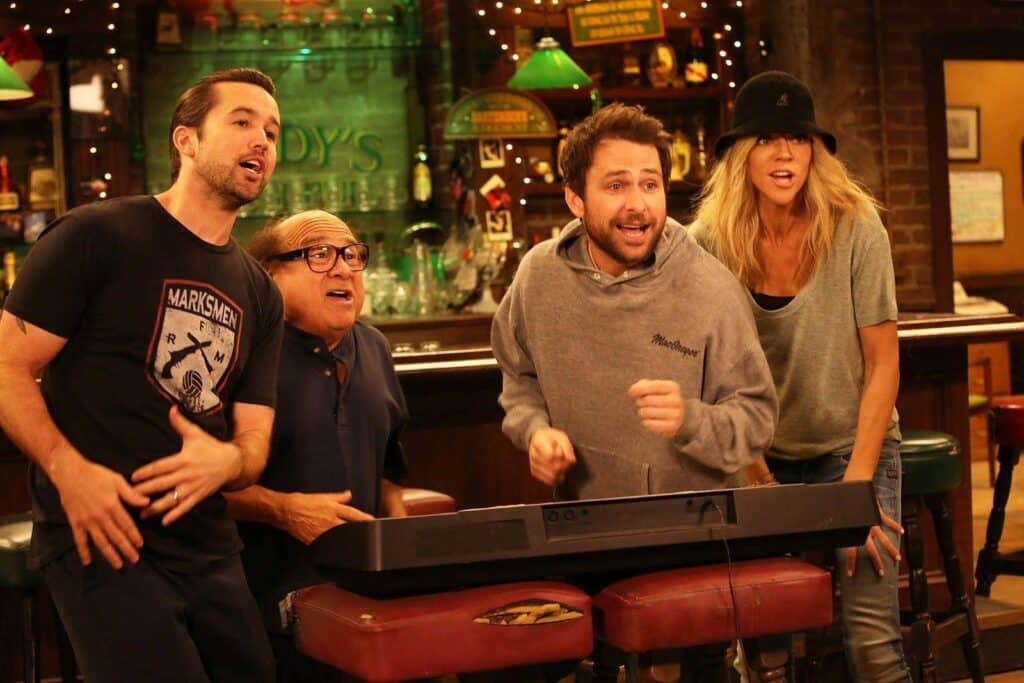
4. Write a Pilot Episode
Start with a script for the pilot episode. This should:
- Introduce your main characters and setting.
- Present a central conflict or situation.
- Set the tone and humor of the show.
- Leave room for growth and future storylines.
A good pilot balances both exposition and entertainment. While it may be tempting to cram everything into the pilot, you just want to give the audience a compelling taste of what’s to come.
Ted Lasso’s pilot does all these things extremely well. It quickly establishes its charming premise of an upbeat American football coach who’s hired to manage an English soccer team despite knowing nothing about the sport.
The diverse range of characters include the endlessly optimistic Ted, his loyal sidekick Coach Beard, and the secretly scheming team owner, Rebecca.
Automatically, this cast of characters set off the central conflict of the series due to the culture differences and motives. The characters drive the plot. Read Jason Sudeikis and Bill Lawrence’s standout pilot right here.
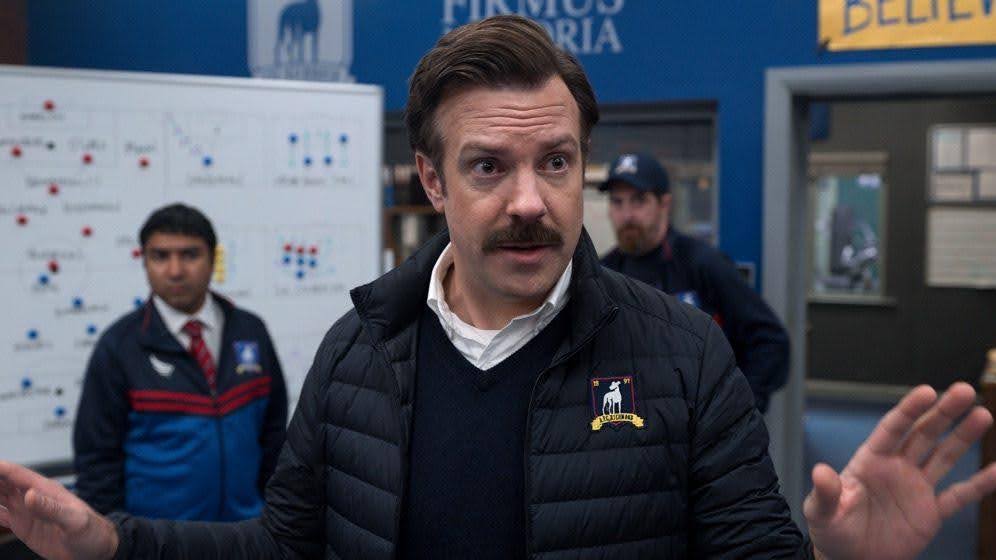
Want to hear from someone who’s no stranger to sitcom success? We spoke to veteran sitcom writer Trevor Risk about his experiences on Letterkenny as well as some sound advice for writers. Read it here.
Writing a Sitcom with Celtx
Hang on! Where should you write this new and shiny pilot script?
When you’re ready to start writing, Celtx is here, offering professional templates for TV writing. We’re not being modest when we say we are one of the best screenwriting resources out there, with:
- Industry-standard formatting.
- Collaboration tools.
- Storyboard and beat sheet integration.
- Budgeting and scheduling tools for production.
If you’re serious about developing your very own sitcom, we can help you take it from concept to camera-ready script. Find out more here.
Plus, make sure to check out our post How to Write a TV Show Script for all our tips and tricks.
Conclusion
Sitcoms are more than just “shows that make us laugh.” They’re mirrors of our lives and always relatable. They give us characters to root for, moments to remember, and reasons to keep watching.
From Seinfeld to Ted Lasso, the sitcom has proven its versatility and staying power. As long as people face awkward dates, family feuds, office politics, and midlife crises, there will be sitcoms to tell their stories.
So go ahead! Grab that pen (or open that Celtx doc) and start crafting your own situation comedy.
Up Next
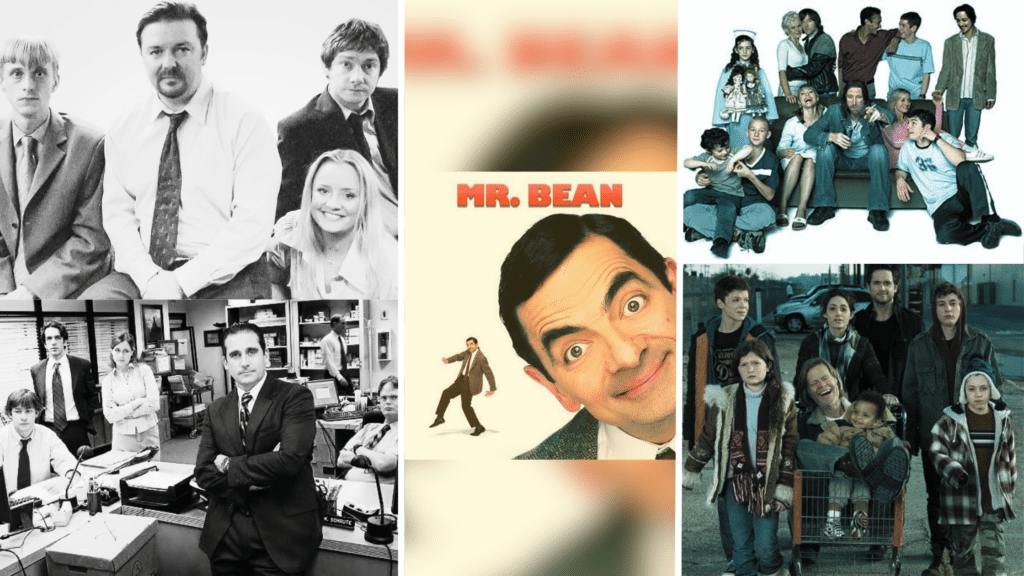
Sitcom Showdown: Modern Sitcoms and Their Global Counterparts
An exploration into how comedy differs between the two biggest producers of comedy: the US and UK. We’ll compare the humor, how the stories and characters are adapted, and see who’s really the best at crafting comedy.
